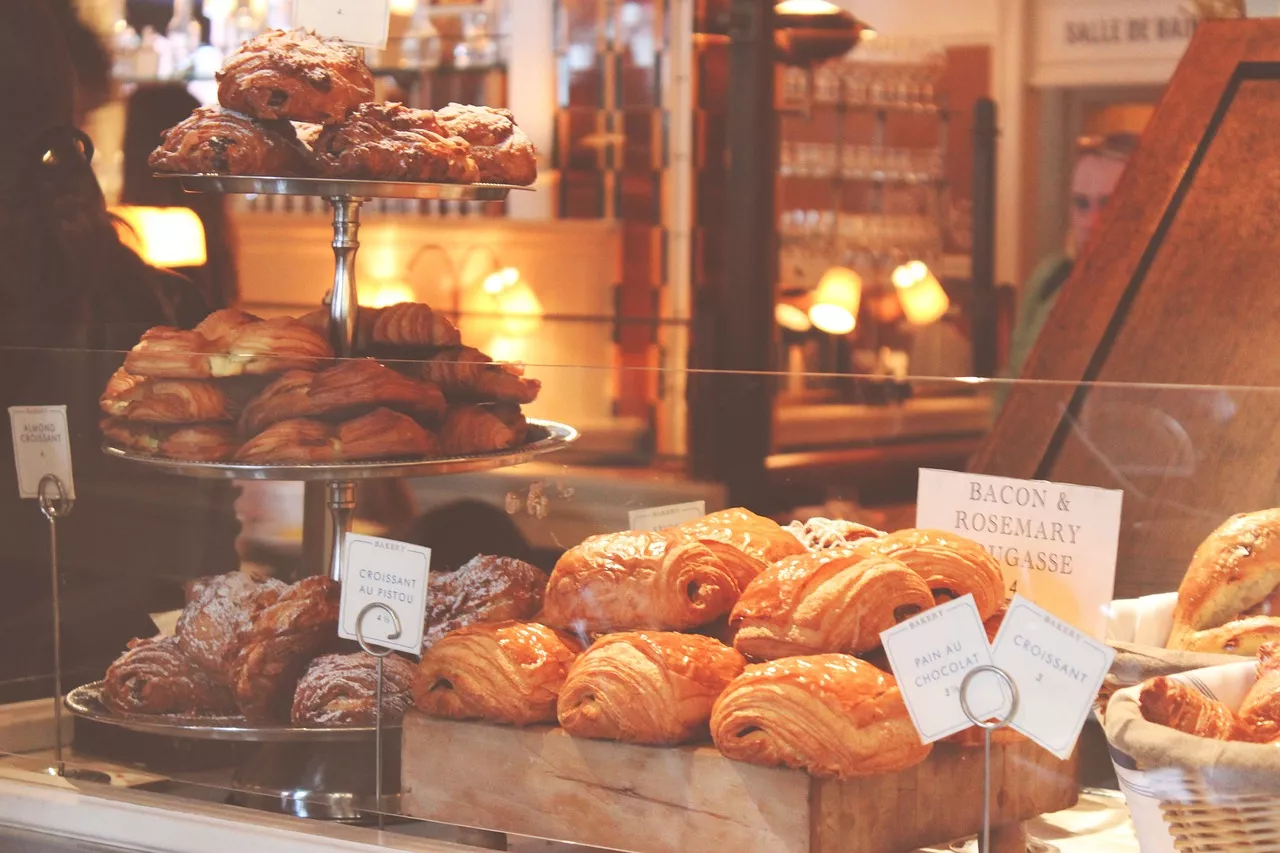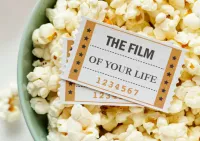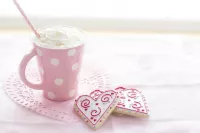Introduction
Have you always been in awe of those beautifully decorated cakes and perfectly risen bread loaves? If you've ever wished to master the art of baking, then you're in the right place. Welcome to the ultimate beginner's guide to baking, where you can learn all the skills, techniques, and insider tips to become a baking pro.
Whether you're a complete newbie in the kitchen or have dabbled in baking before, this guide will walk you through the fundamentals and help you build a solid foundation. From understanding the science behind baking to learning how to choose the right ingredients and equipment, we've got you covered.
Join us as we explore the world of baking, from classic recipes to innovative creations. You'll discover the secrets to making the perfect fluffy cakes, flaky pastries, and crusty breads that will impress your friends and family.
No matter your skill level or baking aspirations, this guide will equip you with the knowledge and confidence to unleash your creativity in the kitchen. Get ready to embark on a delicious baking journey that will delight your taste buds and bring joy to the hearts of your loved ones. Let's get started!
Essential Baking Tools and Equipment
Baking requires a few essential tools and equipment to ensure successful results. Here are some must-haves for any aspiring baker:
1.
Measuring Cups and Spoons: Accurate measurements are crucial in baking. Invest in a set of measuring cups and spoons to ensure you add the right amount of ingredients.
2.
Mixing Bowls: A set of mixing bowls in various sizes will come in handy for mixing ingredients, whisking, or kneading dough.
3.
Whisk: Whisks are versatile tools that help incorporate air into batters, beat eggs, and blend ingredients smoothly.
4.
Spatula: A spatula is essential for scraping down the sides of bowls, folding ingredients, and smoothing out batter.
5.
Baking Pans: Invest in a variety of baking pans, including round cake pans, loaf pans, and cookie sheets, to accommodate different recipes.
6.
Oven Thermometer: To ensure accurate baking temperatures, an oven thermometer is essential. Ovens can often have temperature discrepancies, so this tool will help you achieve consistent results.
7.
Cooling Rack: A cooling rack allows baked goods to cool evenly and prevents them from becoming soggy on the bottom.
Remember, these are just the basics. As you progress in your baking journey, you may want to expand your collection to include more specialized tools and equipment.
Understanding Baking Measurements and Conversions
In baking, precise measurements are crucial for achieving the desired results. Understanding the different units of measurement and conversions is essential. Here's a breakdown of the most common baking measurements and their conversions:
1.
Cups: Cups are commonly used to measure dry ingredients, such as flour and sugar. One cup is equal to 240 milliliters or 16 tablespoons.
2.
Tablespoons and Teaspoons: These smaller units of measurement are used for both dry and liquid ingredients. One tablespoon is equal to 3 teaspoons.
3.
Ounces: Ounces are primarily used to measure liquids. One fluid ounce is equal to approximately 30 milliliters.
4.
Grams: Grams are commonly used in baking recipes, especially in European recipes. They provide more precise measurements for dry ingredients. Use a kitchen scale to measure ingredients in grams accurately.
5.
Pounds: Pounds are typically used when measuring larger quantities of ingredients. One pound is equal to 16 ounces.
Conversions between these units may vary depending on the ingredient being measured. It's always a good idea to refer to a reliable conversion chart or use a kitchen scale for accuracy.
Basic Baking Techniques and Terminology
To become a skilled baker, it's essential to understand basic baking techniques and terminology. Here are some key techniques you'll encounter in recipes:
1.
Creaming: Creaming is the process of beating together softened butter and sugar until light and fluffy. This technique helps incorporate air into the mixture, resulting in a tender texture.
2.
Whipping: Whipping refers to beating ingredients, such as egg whites or cream, to incorporate air and increase volume. Whipped egg whites are often used to provide lightness and structure to cakes and meringues.
3.
Folding: Folding is a delicate technique used to combine ingredients without deflating them. It involves gently incorporating one mixture into another using a spatula or a whisk.
4.
Kneading: Kneading is the process of working dough by hand or with a stand mixer to develop gluten and create a smooth, elastic texture.
5.
Proofing: Proofing refers to the process of allowing yeast dough to rise before baking. It activates the yeast, allowing the dough to expand and develop flavor.
Understanding these techniques and terminology will help you follow recipes accurately and achieve the desired results.
Baking Ingredients and Their Functions
To become a successful baker, it's crucial to understand the roles of different ingredients in baking. Here's a breakdown of some common baking ingredients and their functions:
1.
Flour: Flour provides structure and texture to baked goods. It contains proteins that develop gluten when mixed with liquid, giving strength and elasticity to dough.
2.
Leavening Agents: Leavening agents, such as baking powder and baking soda, help baked goods rise by releasing carbon dioxide gas when combined with acidic ingredients or heat.
3.
Sugar: Sugar adds sweetness and moisture to baked goods. It also helps tenderize the texture and aids in browning.
4.
Fats: Fats, such as butter, oil, or shortening, contribute to the flavor, tenderness, and moisture of baked goods. They also help with browning.
5.
Eggs: Eggs provide structure, moisture, and richness to baked goods. They act as binders and emulsifiers, helping to hold ingredients together.
6.
Liquid: Liquid ingredients, such as milk or water, provide moisture to the dough or batter. They help dissolve other ingredients and contribute to the texture and flavor.
Understanding the functions of these ingredients will enable you to make informed substitutions, troubleshoot recipe issues, and experiment with your own creations.
Common Baking Mistakes and How to Avoid Them
Even the most experienced bakers make mistakes from time to time. Here are some common baking mistakes and tips on how to avoid them:
1.
Overmixing: Overmixing can lead to tough baked goods. Mix the batter just until the ingredients are incorporated to avoid overdeveloping gluten.
2.
Incorrect Oven Temperature: An oven that is too hot or too cold can affect the baking time and texture of your creations. Invest in an oven thermometer to ensure accurate temperatures.
3.
Using Expired Ingredients: Expired ingredients can affect the taste and texture of your baked goods. Check the expiration dates and use fresh ingredients for the best results.
4.
Not Preheating the Oven: Preheating the oven is essential to ensure even baking. Always preheat the oven to the specified temperature before placing your baked goods inside.
5.
Measuring Ingredients Incorrectly: Accurate measurements are crucial in baking. Use proper measuring tools and follow the recipe instructions carefully to avoid measurement errors.
By being aware of these common mistakes and taking precautions, you can improve your baking skills and achieve consistent results.
Beginner-Friendly Baking Recipes
Now that you have a solid foundation of baking knowledge, it's time to put it into practice with some beginner-friendly recipes. Here are a few delicious recipes to get you started:
1.
Classic Chocolate Chip Cookies: Who can resist a batch of warm, gooey chocolate chip cookies? This recipe is a crowd-pleaser and perfect for beginners.
2.
Vanilla Cupcakes with Buttercream Frosting: Cupcakes are a great way to practice your baking and decorating skills. These fluffy vanilla cupcakes with buttercream frosting are sure to impress.
3.
Homemade Pizza Dough: Making your own pizza dough is a fun and rewarding experience. Customize your toppings and create delicious homemade pizzas for your family and friends.
Remember to follow the recipes closely, measure accurately, and have fun experimenting with different flavors and decorations.
Baking Tips and Tricks for Success
To take your baking skills to the next level, here are some additional tips and tricks to keep in mind:
1.
Read the Recipe: Before you start baking, read the recipe thoroughly to understand the steps and ingredients required. This will help you avoid mistakes and ensure a smooth baking process.
2.
Prepare Ingredients in Advance: Measure and prepare all your ingredients before you start baking. This will save you time and help you stay organized.
3.
Room Temperature Ingredients: Most recipes call for room temperature ingredients, especially butter and eggs. Allowing these ingredients to come to room temperature ensures better incorporation and results in lighter baked goods.
4.
Proper Cooling and Storage: Allow your baked goods to cool completely before storing them. Improper cooling can lead to condensation, making them soggy. Store them in airtight containers to maintain freshness.
5.
Practice and Experiment: Baking is a skill that improves with practice. Don't be afraid to experiment with different flavors, techniques, and recipes. Embrace the learning process and have fun along the way.
Baking Resources and References
As you continue your baking journey, it's helpful to have reliable resources and references. Here are some recommended books, websites, and online communities for further learning and inspiration:
1.
Books: "The Joy of Baking" by Mary Berry, "Baking Illustrated" by Cook's Illustrated, and "The Bread Baker's Apprentice" by Peter Reinhart.
2.
Websites: King Arthur Baking (www.kingarthurbaking.com), Sally's Baking Addiction (www.sallysbakingaddiction.com), and Food52 (www.food52.com).
3.
Online Communities: Join baking communities on social media platforms like Instagram, Facebook, and Reddit. Engage with fellow bakers, share your creations, and learn from their experiences.
These resources will provide you with a wealth of knowledge, recipes, and inspiration to fuel your passion for baking.
Conclusion: Start Your Baking Journey
Congratulations! You've reached the end of our ultimate beginner's guide to baking. Armed with the knowledge of essential tools, measurements, techniques, and ingredients, you're ready to embark on a delicious baking journey.
Remember, baking is both a science and an art. Practice, patience, and a willingness to learn from your experiences will help you become a confident and skilled baker.
So, gather your ingredients, preheat the oven, and let your creativity soar. Whether you're baking for pleasure, sharing with loved ones, or dreaming of starting your own bakery, enjoy the process and savor the sweet rewards.
Happy baking!
[Word count: 1239 words]

 Discover the Secrets to Perfectly Popped Popcorn at Home
Discover the Secrets to Perfectly Popped Popcorn at Home 10 Delicious Winter Recipes to Keep You Satisfied
10 Delicious Winter Recipes to Keep You Satisfied



